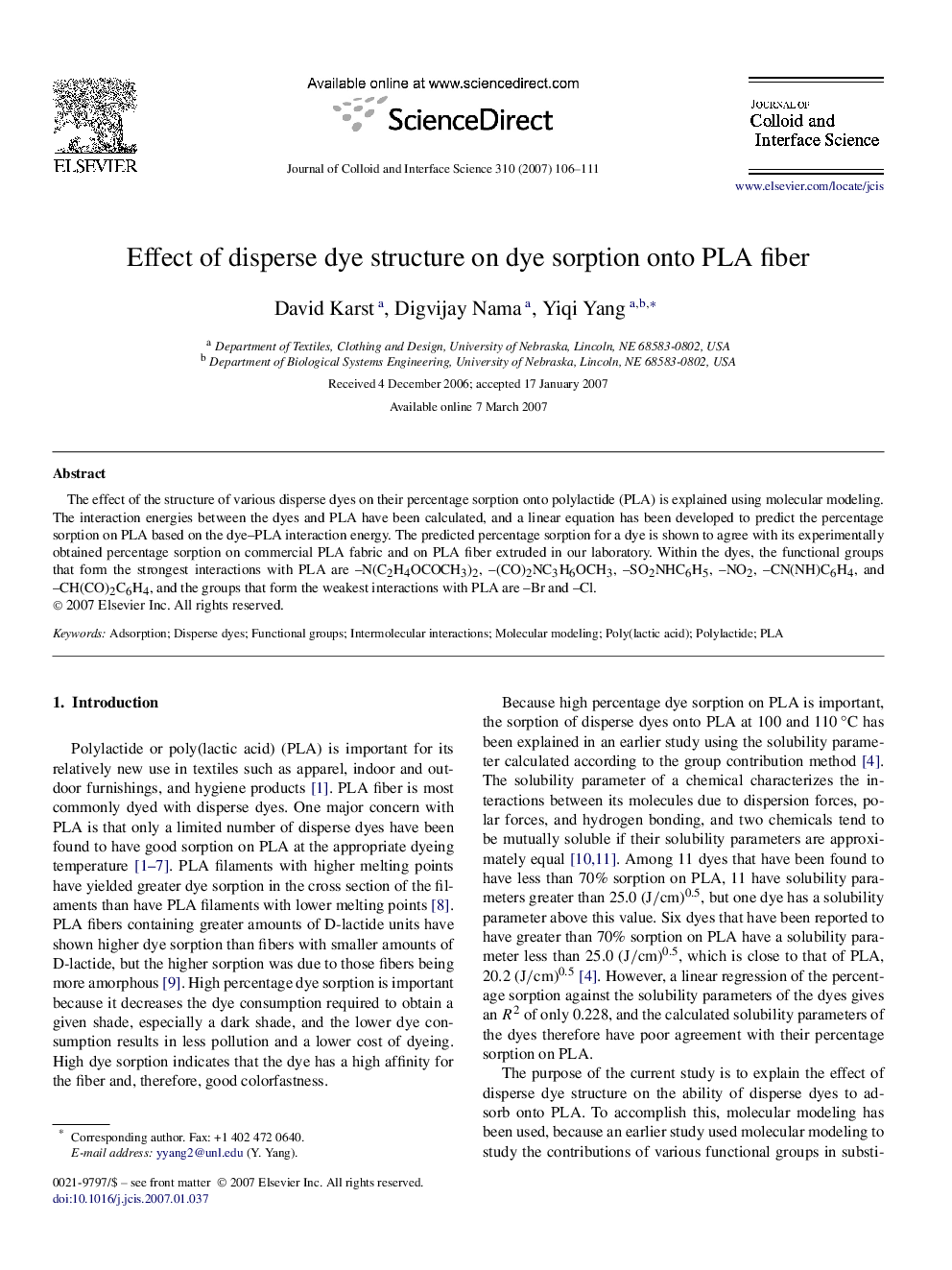| Article ID | Journal | Published Year | Pages | File Type |
|---|---|---|---|---|
| 612317 | Journal of Colloid and Interface Science | 2007 | 6 Pages |
The effect of the structure of various disperse dyes on their percentage sorption onto polylactide (PLA) is explained using molecular modeling. The interaction energies between the dyes and PLA have been calculated, and a linear equation has been developed to predict the percentage sorption on PLA based on the dye–PLA interaction energy. The predicted percentage sorption for a dye is shown to agree with its experimentally obtained percentage sorption on commercial PLA fabric and on PLA fiber extruded in our laboratory. Within the dyes, the functional groups that form the strongest interactions with PLA are N(C2H4OCOCH3)2, (CO)2NC3H6OCH3, SO2NHC6H5, NO2, CN(NH)C6H4, and CH(CO)2C6H4, and the groups that form the weakest interactions with PLA are Br and Cl.
Graphical abstractThe interaction energies between various dyes and PLA have been calculated. A linear equation has been developed to predict the percentage dye sorption based on the dye–PLA interaction energy.Figure optionsDownload full-size imageDownload as PowerPoint slide
